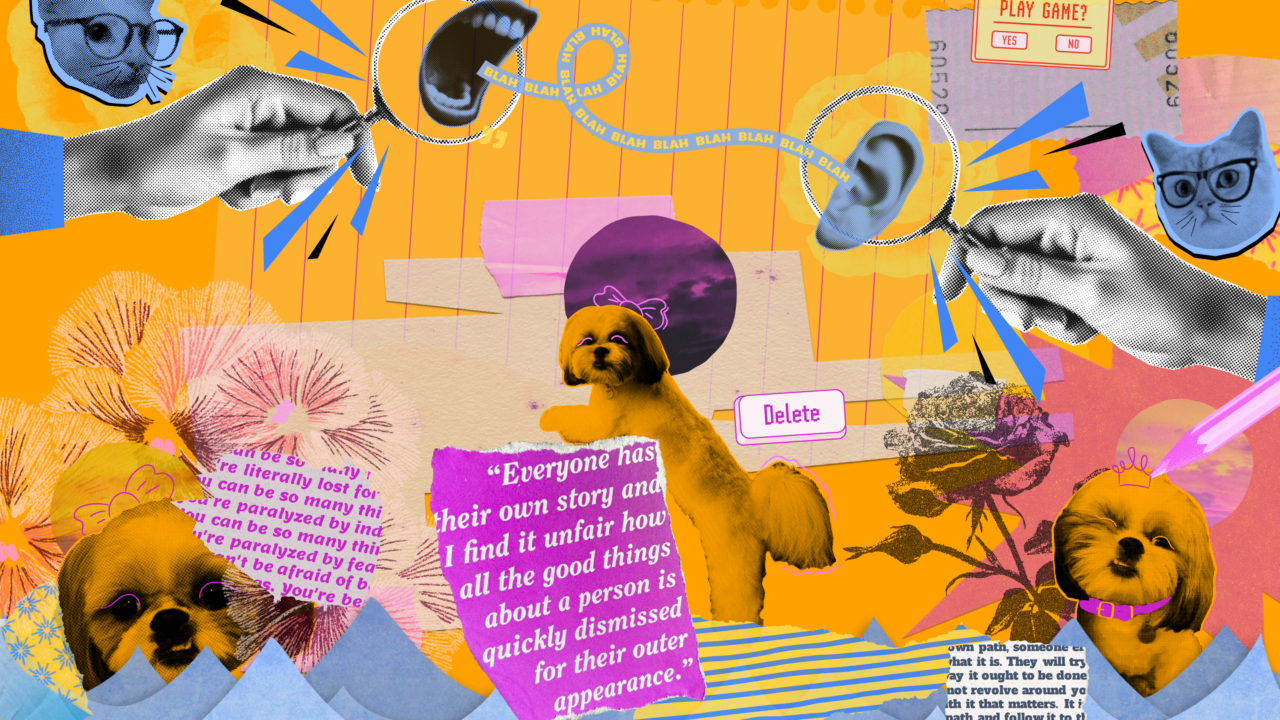In this four-part series, we are exploring the phenomenon known as “cancel culture.” We hope to invite more people into conversations about how we work through tension and conflict in our movements, and to offer viable pathways for recognition, prevention, intervention, and healing.
Given the profound political moment we are in—with the unraveling of many democratic rights and freedoms—it feels more important than ever to strengthen the ways in which we come together on the left. Our capacity to mobilize is strengthened by our ability to work through disagreement and come back from conflict. This series is our humble attempt in this direction.
This third article is meant to support our friends, colleagues, and communities who are struggling (or beginning to struggle) with cancel culture and are wondering how to identify it. We outline some early warning signs, indicators, and conditions that usually show up before a public shaming or online campaign begins. It’s a kind of ‘keep an eye out’ list, and some ideas on what to do if you begin to notice the symptoms, which are often the consequences of conflict avoidance.
Why pay attention to early warning signs
In a lot of social change movements, there is a spoken (and unspoken) desire for means-to-ends consistency: people want their values to show up at each stage of the work and in every interaction or engagement. Then when values are not embodied, and when someone feels hurt or harmed, they expect accountability. We see this desire as both an important and understandable goal.
Yet particularly during stressful times, it’s hard to see accountability happen with grace and curiosity. Polarization has become more normalized and, as a result, people are often kicked out of the very spaces where they have been committed to justice work. Dialogue, learning, and forgiveness are increasingly less present in the quest for consistency and accountability around perceived harmful words and/or behaviors. While we want these harmful actions to change, we can see how this rapid snowball—the tunnel vision that leads from A to Z in quick reactivity—is preventing the very accountability that people are seeking in their organizations and movements.
Building an organization takes a lot of work, and sometimes cracks go unnoticed until eventually the best (or only) solution is to close down. We offer the following “early warning signs” as preventative medicine.
We seek to bring more consciousness to the dynamics that can be a precursor to polarization and/or a breakdown in communication and also hope to highlight key areas that could be used to encourage actual transformation when hurt happens.
In your group or organization, keep an eye out for any of the following:
- There’s an absence of (or decline in) generative feedback: You notice that people have few opportunities to hear from each other in constructive ways about their actions, words, behaviors, etc. There may be a process written down but when it comes up, it gets crunched for time. The group neither has the skills nor the spaces to offer direct feedback that would help improve how you work and collaborate together. Without this communication, hurtful behavior is not checked, early on or at all, and continues to expand.
- Side conversations replace whole group conversations: You see that people are huddling in small groups and raising concerns/complaints but not bringing it to the rest of the group. This is different from venting your concerns and frustrations and then asking for support with the goal of ultimately either taking action or letting it go. This is more like shit-talking or negative gossip, where people aren’t bringing something forward and instead are just holding on to it. You sense that resentment is building without any action or direct feedback.
- Opinions about someone or some people are expressed, with onlookers piling on in agreement: This is a combination of #1 and #2. You observe that when one person is struggling with another, they share that frustration in a side conversation. Then, more people join in and add their complaints so a one-sided story gets constructed into a singular narrative, with each person adding more fuel to the flame. One person becomes the focus of a large group’s frustrations, usually without their knowledge or awareness. Suddenly, the “case” against the person starts to feel airtight.
- People get flattened to their identities: You hear people being described as only their race and gender. People aren’t being seen for the wholeness or bigger life stories and are instead being reduced to a few identities. These are meant to fill in for an explanation of the person’s actions or behaviors, as in, “Can you believe he said that?” “Yeah. I mean, he is a white guy.”
- Right/wrong binary thinking becomes more pervasive: You sense the group breaking into camps of “good” or “bad,” and people start aligning themselves with one party or another in the conflict. They aren’t trying to bridge differences. They are seeking to prove the “rightness” of their side or the “wrongness” of the other side. Listening, with a sense of deeper curiosity, along with the possibility that there simply may be a misunderstanding, is absent.
- There’s more use of “always” and “never”: Similar to above, you begin to hear more extreme statements with absolutes and generalizations. There is less space for nuance, complexity, or both/and, and therefore there is less space for creativity and imagination of a variety of possibilities. You begin to feel like there are no other options, other than discarding the person or people involved.
- People are checking out more or avoiding: Just as some people might be more engaged in “fight” mode and taking sides in the conflict, others might appear to be absent or withdrawn, including those who may be natural peacemakers/bridge-builders or who may have different perspectives on the causes of conflict. Avoidance of conflict can also look like people changing the subject, getting overly occupied with minor details, making jokes, or suggesting a collective distraction of some kind instead of naming what is going on and creating space to work on it together.
- Next steps aren’t included in the feedback loop (or there is no feedback loop): A feedback loop is complete when feedback is given, received, and co-created next steps are agreed to and followed up with. Without the feedback loop, a person or group of people is allowed to continue with their behaviors which breaks down trust in the organization and generates a sense of helplessness as well as a lack of safety for people who are feeling harmed. Next steps need to be revisited, so that everyone can weigh in on how the change is going and to what degree repair is happening.
- There are few/no mechanisms for conflict transformation: You notice that people don’t openly talk about conflict or difference in the group and feel shocked when it happens. The organization doesn’t have much experience with transforming conflict such as mediation, check-in circles, non-violent communication, etc., and have not engaged a skilled practitioner to fill the gap. The main approach to conflict is “don’t ask, don’t tell.”
- Hurt/harm/annoyance/frustration are all being collapsed into one. If you start hearing people expressing their frustrations or annoyances with others as “being harmed” or begin to experience more of a heightened sensitivity around others, this may indicate that you’re moving in the direction of the villain-victim binary. This collapse is often related to the lack of generative conflict opportunities and healthy feedback mechanisms. When people do not slow down to sort out their feelings and reactions to others’ behaviors and words—to see what is intentional, what is accidental, what is a personality quirk, what is a different understanding—then small issues can quickly snowball into big ones. People build their cases of “harm” rather than seeking connection and understanding.
- Expectations for belonging are put entirely on the organization. You notice that more personal needs and expectations are being put on the organization or movement spaces outside of its scope or capacity. With both the collapse of third places, and the passion and dedication folks have for social justice, many people look to their organizations and movements to be their primary place for belonging. While you want to encourage belonging, you also note that unchecked, unconscious, or unspoken expectations will be a set-up for failure and disappointment since it can be nearly impossible to meet everyone’s needs all the time. [Note: This theme was explored in Sammie Ablaza Wills’s piece, “Right Sized Belonging”.]
- Perfectionism is rampant: Along with a lack of feedback, people feel unable to make mistakes or talk about them openly. You hear comments from people judging themselves or others for something not being 100%, so there is little space for learning or co-learning, much less for forgiveness to self or others. There doesn’t seem to be the opportunity for simply being with discomfort for a little while, without needing a “fix” or “solution,” and then allowing things to emerge and align in new and often unpredictable ways.
What Can You Do About It?
Practicing justice in a world struggling to see its way through multiple catastrophes is difficult, to say the least. Yet we believe that there are some commitments and practices we can take to move through it, and we are dedicated to sharing what’s worked for us. If any of our “early warning signs” feel true for where you are, here are some practices you can start to grow individually and collectively:
- Learn feedback tools and build mechanisms that support regular feedback for every person’s position in the organization. Bi-weekly feedback questions and transparent dialogue can be supportive for everyone. Options for how to do feedback can be found in these resources.
- Invest in co-learning simple and effective conflict transformational practices. Here’s an example from YES! Jams.
- Invite in the people who might be quieter, who have pulled away or have a different perspective than the narrative that is being shared in the group. Ask them what they’re seeing from their perspective. Here’s a list of facilitation tools for organizing meetings from Training for Change that’ll help open up dialogue and explore group dynamics.
- Create consistent collective spaces for bringing forward concerns; if needed, bring in a skilled facilitator to support difficult conversations. Remember that the people directly involved in the conflict cannot be the ones to neutrally hold the conversation. They need the support of the rest of the group, especially those who feel balanced and open to co-learning and co-creating repair.
- Model curiosity. We don’t always know what’s going on. When the opportunities allow, choose to be more gentle with each other. Asking, “How did you come to believe that?” can be powerful, as can a practice of appreciative inquiry. Here’s a 30 minute activity to help practice appreciative inquiry.
- Notice if you feel social pressure to choose one side of a conflict and give yourself some time to think and reflect. Hang out in the discomfort for a bit and allow yourself to co-exist rather than co-sign onto one opinion or another. By slowing down, sometimes a clearer pathway emerges. Ask yourself: “What could be ways for me to support all of the people involved?”
- Spend time getting to know each other more deeply and never go longer than a month without some kind of non-work check-in. Relationship-building, by sharing stories and experiences rather than opinions and ideas, goes far in growing the trust we need when conflicts come up. Here’s a check-in circle that gives each person a chance to speak.
- If you’re an Executive Director, aim to share transparently about some of the limitations of a nonprofit structure, legalities, liabilities, and human resource policies. Sometimes, it is difficult for others to understand how organizational structures don’t always align 100% with personal politics or social justice goals. Explore together how to accept some limits and also where there might be creative work-arounds that you can collectively experiment with. Check out some of the resources from the Nonprofit Democracy Network or the Sustainable Economies Law Center.
- Try inviting dialogues that get explicit around expectations and needs in our organizations and movements. Reflect on concrete examples of what belonging has or could look like in this group. Encourage curiosity, and when differences appear, slow down to find common ground. Move from assumed, unconscious, unagreed-upon expectations to explicit intentions and agreements to help set healthy boundaries and offer care to each other.
- If you do find yourself blaming someone for something, take some breaths and give yourself some space for a bit. See if you can notice the complexity of the situation or at least one other perspective, or ask a friend for help with that.
- Don’t shit-talk. If someone wants to vent or share something confidentially, you can listen if you want, but please don’t pass it on for the sake of degrading the person. Piling-on only leads to more shit, not to healthy compost.
We hope this article might support you to keep an eye out in your organization and in yourself. We care about complexity and want to cultivate curiosity for finding out more, even before a cancellation situation begins to brew. The breakdown can happen quickly, especially when rigid polarization has become so embedded in mainstream society. Yet in contrast with harm or abuse, most conflicts are rarely just one person’s fault. More often than not, they are co-created acts, in which not just the individuals involved but also the collective approach to conflict (or lack thereof) is shaping the outcome. In other words, the culture around conflict in any movement/organization is as important as the specific details of the situation.
We will explore more around this spectrum and on interventions for healing in the final article in this series. Ultimately, as we share in a collective responsibility for suffering, we hope we can also work together to foster growth and healing.
Please share your stories, reflections, and questions with us at contact.weneedeachother@gmail.com. We hope to deepen the dialogue with you.




